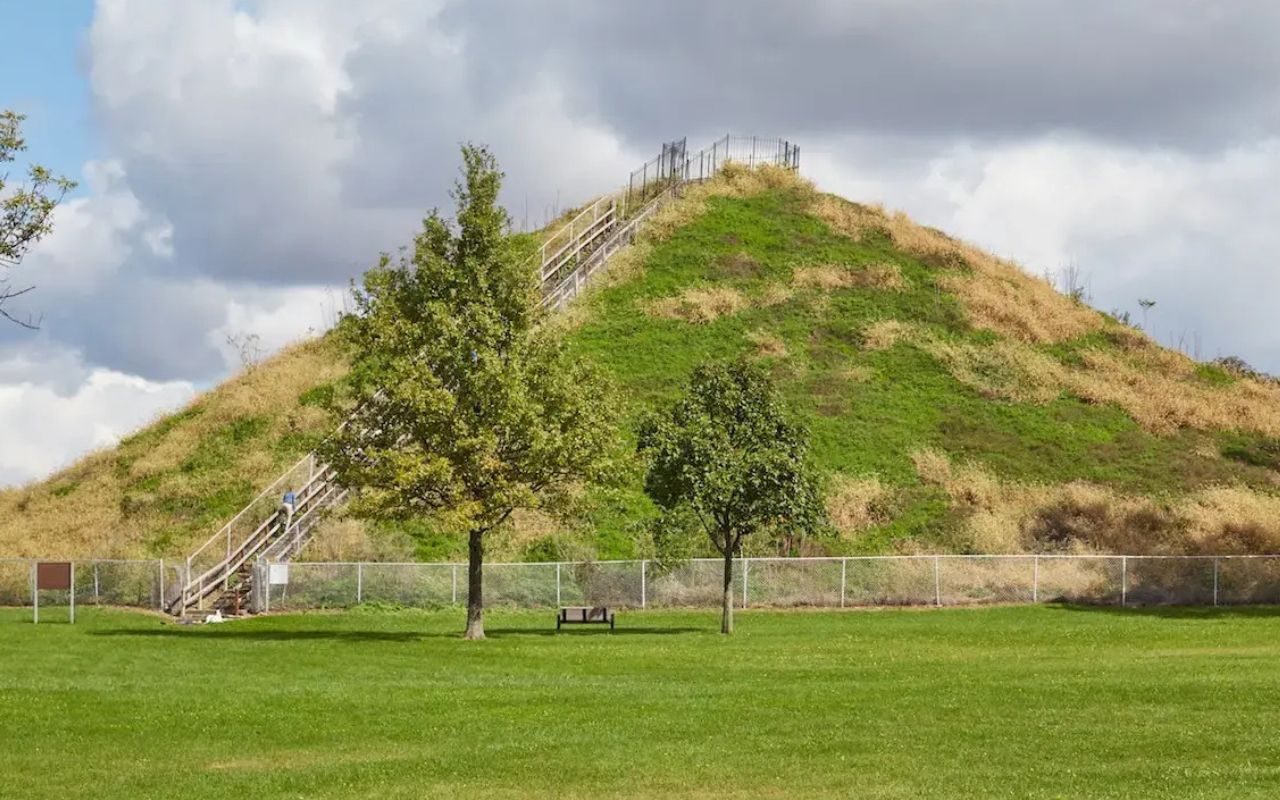Hidden Native American Mounds Of Ohio River Valley

Have you ever wondered about the hidden Native American mounds scattered across the Ohio River Valley? These ancient earthworks, built by indigenous peoples long before European settlers arrived, hold secrets of past cultures. Some mounds served as burial sites, while others had ceremonial purposes. The most famous of these is the Serpent Mound, a winding structure that stretches over 1,300 feet. Visiting these sites offers a glimpse into the lives of those who lived here thousands of years ago. Exploring these mounds can feel like stepping back in time, connecting with history in a tangible way. Whether you're a history buff or just curious, the Ohio River Valley's mounds provide a fascinating journey into the past. Discovering these ancient wonders can be an unforgettable experience, sparking curiosity about the people who once called this land home.
Discovering the Hidden Native American Mounds of the Ohio River Valley
The Ohio River Valley is a treasure chest of ancient history. Hidden within its lush landscapes are mysterious mounds built by Native American cultures thousands of years ago. These earthworks hold secrets of the past and offer a glimpse into the lives of those who came before us. Let's uncover some of these fascinating sites.
Serpent Mound: A Slithering Mystery
One of the most famous mounds in the Ohio River Valley, Serpent Mound is a winding earthwork that resembles a giant snake. This prehistoric site is a marvel of ancient engineering and artistry.
- Serpent Mound: This mound stretches over 1,300 feet and is shaped like a serpent with a coiled tail and an open mouth. Believed to have been built by the Adena culture, it may have served as a ceremonial site or a calendar aligned with the solstices.
Fort Ancient: A Fortress of Earth
Fort Ancient is not just a single mound but a complex of earthworks that spans over 100 acres. This site offers a peek into the defensive strategies and community life of ancient peoples.
- Fort Ancient: Built by the Hopewell culture, this site features earthen walls and ditches that form a massive enclosure. It likely served as a ceremonial center and a gathering place for social and religious events.
Newark Earthworks: A Geometric Wonder
The Newark Earthworks are a testament to the mathematical and astronomical knowledge of their builders. These geometric shapes are among the largest earthen enclosures in the world.
Great Circle Earthworks: Part of the Newark complex, this circle spans 1,200 feet in diameter and features a deep moat. It may have been used for ceremonial purposes or as a lunar observatory.
Octagon Earthworks: Another part of the Newark site, this octagon is connected to a circular earthwork. It aligns with the moon's 18.6-year cycle, showcasing the builders' astronomical expertise.
Mound City Group: A Burial Ground of the Past
Mound City Group is a collection of burial mounds that provide insight into the spiritual beliefs and practices of ancient cultures.
- Mound City Group: Located near Chillicothe, this site contains 23 mounds within a rectangular enclosure. Excavations have revealed artifacts such as pottery, tools, and ornaments, indicating its use as a burial site.
Hopewell Culture National Historical Park: A Hub of Ancient Activity
This park preserves several mound sites that highlight the creativity and complexity of the Hopewell culture.
Seip Earthworks: Featuring a large, oval-shaped mound, this site was likely used for ceremonial gatherings. Artifacts found here include copper and mica objects, showcasing the Hopewell's extensive trade networks.
Hopewell Mound Group: This site contains the largest known Hopewell mound, standing 33 feet tall. It served as a ceremonial center and a burial site, with numerous artifacts unearthed during excavations.
Effigy Mounds: Symbols of Spirituality
Effigy mounds are shaped like animals or symbols, reflecting the spiritual beliefs of their creators. These mounds offer a unique perspective on the cultural and religious life of ancient peoples.
Alligator Mound: Despite its name, this effigy mound is believed to represent a mythical creature rather than an alligator. It stretches 200 feet and may have been used for ceremonial purposes.
Cresap Mound: Located in West Virginia, this mound is shaped like a crescent moon. It is thought to have been a site for rituals and ceremonies, reflecting the spiritual significance of celestial bodies.
Discovering Ohio's Ancient Secrets
Ohio River Valley's Native American mounds offer a glimpse into a world long past. These ancient structures, built by indigenous peoples, hold stories of ceremonial practices, astronomical alignments, and community gatherings. Visiting these sites, like the Serpent Mound or Hopewell Culture National Historical Park, connects us to the rich history and culture of the region's first inhabitants. Each mound tells a unique story, reflecting the ingenuity and spirituality of its creators. Exploring these sites not only enriches our understanding of history but also fosters appreciation for the cultural heritage that shaped the land. Whether you're a history buff or just curious, these mounds offer a fascinating journey into the past. So next time you're in Ohio, take a moment to visit these hidden gems and reflect on the legacy left by those who came before us.

